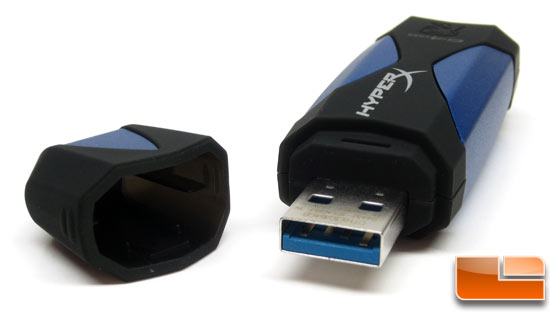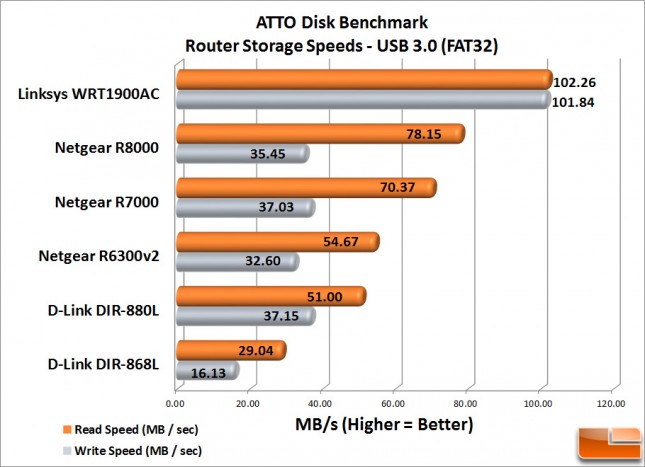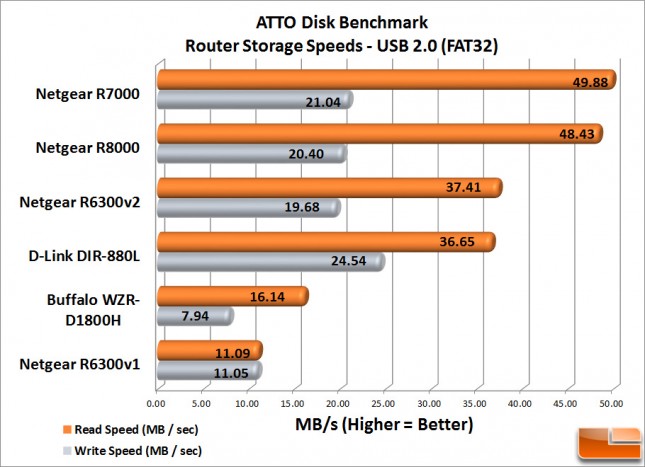D-Link DIR-880L Wireless AC1900 Dual Band Gigabit Cloud Router
Router Network Attached Storage Tests
One of the major components of these next-generation routers is the ability for them to double as home-ready Network Attached Storage (NAS) devices. If a person didnt want to spend a lot of money for a stand-alone NAS unit which could cost hundreds of dollars for a 2TB unit, an integrated solution that allows you to add a USB drive for much less might be perfect. Of course the question is how good is the performances of these routers when it comes to attached storage. 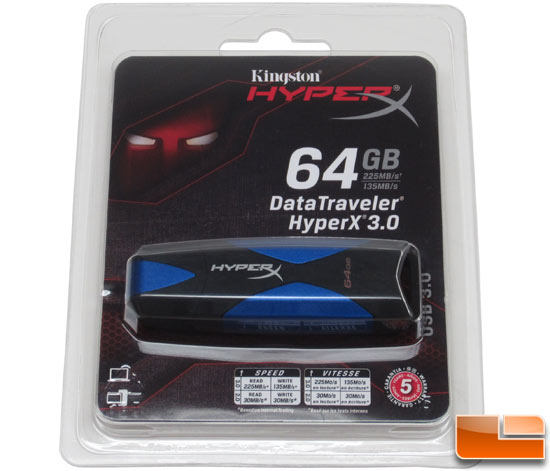
For our Router Storage test, we used the very popular ATTO Disk Benchmark to measure transfer speeds of our routers USB 2.0 and USB 3.0 ports. ATTO measures raw transfer rates for both Read and Write plotting them in a graph that is easy to understand. We ran our routers with this test with default ATTO settings of 0.5 KB up through 8192.0 KB transfer sizes with the total length being 256 MB.
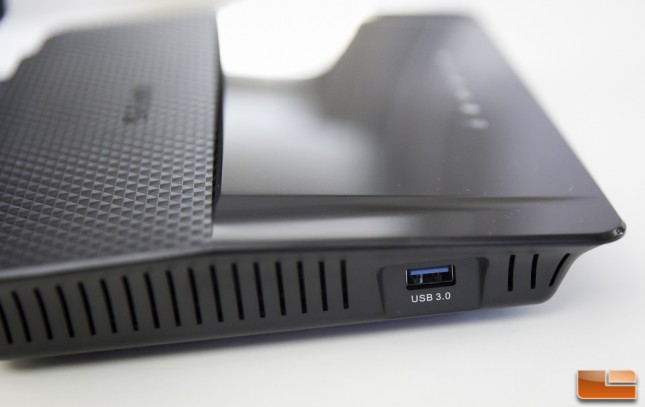 The folks at Kingston were kind enough to send over a Kingston DataTraveler HyperX 3.0 USB drive for our tests. The Kingston HyperX USB 3.0 Flash drive has 300MB/s read and 160MB/s write speed that should be well over what this generation routers can support. We wanted to make sure the write speeds would be high enough not to bottleneck the benchmarks of these next generation routers.
The folks at Kingston were kind enough to send over a Kingston DataTraveler HyperX 3.0 USB drive for our tests. The Kingston HyperX USB 3.0 Flash drive has 300MB/s read and 160MB/s write speed that should be well over what this generation routers can support. We wanted to make sure the write speeds would be high enough not to bottleneck the benchmarks of these next generation routers.
Benchmark Results: ATTO shows that there is a jump in attached storage speeds for the D-Link DIR-880L over the older D-Link DIR-868L. The D-Link routers trail the suite of Netgear routers with USB 3.0 performance numbers that look fairly pedestrian.
Benchmark Results: For USB 2.0 speeds, the D-Link DIR-880L is more competitive yet in the middle-of-the-pack with Read Speeds of around 37 MB/sec while the latest Netgear routers easily top 48 MB/sec. If you just have to use a USB 2.0 drive, the D-Link DIR-880L might not be the first router you look at.

